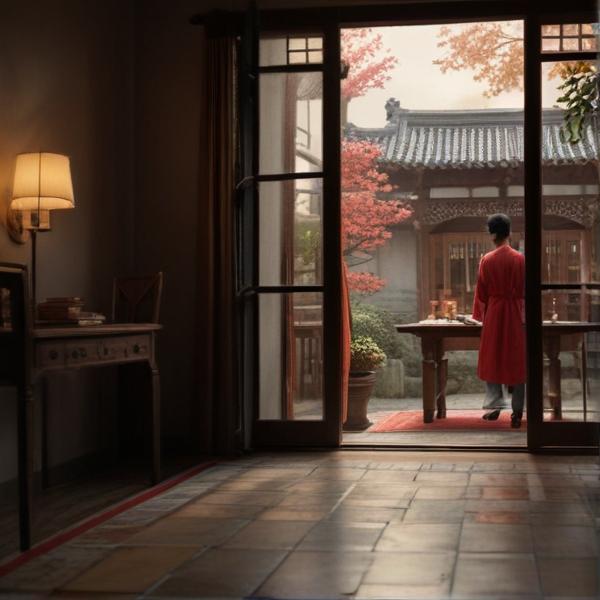基本信息 (Basic Information)
含义与用法 (Meanings & Usage)
中文核心释义 (Core Chinese Meaning): 薄而平的小块或小张
英文核心释义 (Core English Meaning): a thin, flat piece or slice
象形意义 / 为何这么写 (Pictographic Meaning / Writing Rationale)
文言文释义 (Classical Chinese Meaning)
与现代意义相近,主要表示薄而平的物体或分割的部分。Similar to modern meaning, mainly referring to thin, flat objects or divided parts.
深入学习 (In-depth Study)
字源故事 (Origin Story)
字形演变 (Character Evolution)
常用词语和例句 (Common Words & Examples)
影片 (film (movie), movie)
这部影片非常感人。
Eng: This movie is very touching.
卡片 (card (paper or plastic card))
请填写这张卡片上的信息。
Eng: Please fill out the information on this card.
切片 (slice (especially of food or objects); to slice)
妈妈在厨房里切片土豆。
Eng: Mom is slicing potatoes in the kitchen.
相关成语 (Related Idioms)
相关成语信息待补充。Related idiom information pending.
多语言翻译 (核心释义) (Translations (Core Meaning))
- French: morceau mince, tranche, pièce plate
- German: Scheibe, Stück, dünne Platte
- Spanish: trozo delgado, lámina, porción
- Italian: fetta, pezzo sottile, lastra
- Portuguese: fatia, pedaço fino, placa
- Russian: ломтик, тонкий кусок, пластинка
- Arabic: شريحة، قطعة رقيقة، ورقة
- Persian: قطعه نازک، برش، لایه
- Dutch: plak, stukje, dunne plaat
- Polish: plasterek, cienki kawałek, płytka
- Vietnamese: miếng mỏng, lát, tấm
- Ukrainian: шматочок, тонкий зріз, пластина
视频学习资源 (Video Learning Resources)
通过以下链接在热门视频网站搜索 "片" 的更多讲解:
Search for more explanations of "片" on popular video sites:
- 在 Bilibili.com 搜索 "片 字源 说文解字" (Search on Bilibili)
- 在 YouTube.com 搜索 "片 character origin etymology" (Search on YouTube)
网络参考 (Web References for "片") ()
网络内容摘要 (Web Content Summary):
```html核心含义与起源:“片”是一个指事字,本义是指把木头一分为二所得的一块薄片。《说文解字》记载:“片,判木也。从半木。” 甲骨文的字形像木头被分开的形状。部分学者也认为它有象形含义,古文字看起来像立起来的床,也和“爿”字形相近。 Core Meaning & Origin: “片” is an ideogram, originally meaning a thin piece resulting from splitting wood into two parts. According to ancient dictionaries, its oracle bone script resembles a piece of split wood. Some scholars also see it as pictographic, visually similar to the form of a standing bed, closely related to the character 爿 (pán).
- 常见用法:“片”常用来表示薄而小的物体,如“纸片”(piece of paper)、“肉片”(slice of meat)、“电影片”(film/movie)。 Common Usage: "片" often refers to thin, small pieces, such as “纸片” (piece of paper), “肉片” (slice of meat), and “电影片” (film/movie).
- 易混淆点:“片”与“爿”(pán)字形及起源有联系,都是和木头、床有关的古字,不要混淆。 Common Confusion: "片" is historically and structurally related to “爿” (pán), both linked to wood or furniture in ancient contexts; they should not be confused with each other.
文化背景:古代甲骨文中,“片”还作地名用。同时,“片”用于计量单位及表示部分,如“一片叶子”(a leaf)、“一片心意”(wholeheartedness)。 Cultural Background: In ancient oracle script, “片” also appeared as a place name. It is used as a measure word and to indicate a part or section, as in “一片叶子” (a leaf) or “一片心意” (wholeheartedness).
```汉字"片"的起源、演变过程-汉字字源辞典
《甲文编》303页 《先秦货币》107页 《说文》143页. 指事字。甲骨文作" ",像木字的右半之形,表示把木头分成两半之意。 卜辞用为地名:"戊戌贞:有牧于片。攸侯缶啚。" (《合集》32982) 《说文》:"片,判木也。 从半木。" 段玉裁注:"谓一分为二之木片。 " 这就是"片"字的本义。
片_百度百科
也有一说认为此字是象形字。甲骨文字形有"片"与"爿"两种,都像竖起的床形。 徐中舒 《甲骨文字典》:"(片)象床(牀)形,为牀之初文。 " 于省吾 在主编《甲骨文字诂林》中就"片"字解释说:" 徐灏 《段注笺》、 林义光 《文源》、 章炳麟 《小字答问》亦并谓'爿'为'牀'之 ...
更多图片 (片 More Images) ()
